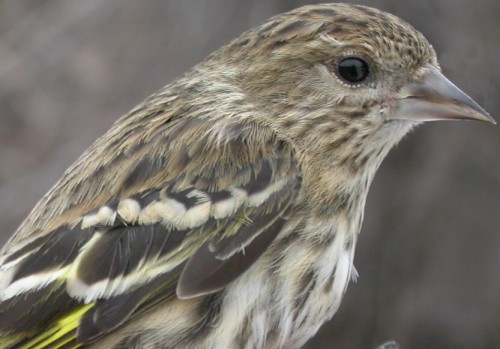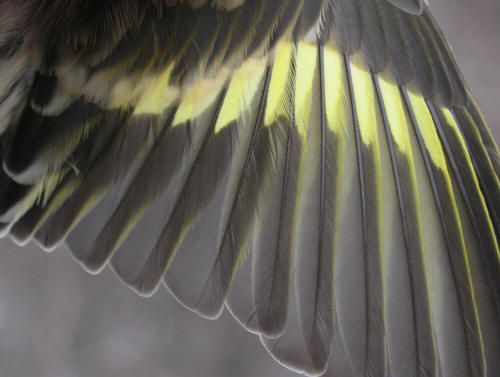|
McGILL BIRD OBSERVATORY |
|||||||||||||||||||||||||||||||||||||||||||||||
Welcome to the McGill Bird Observatory weekly report. Click here for a complete listing of our archives. Comments or questions are welcome at mbo@migrationresearch.org.
Bander-in-charge:
Marcel Gahbauer Notes: We managed to get in one day of banding this week on a beautifully mild Wednesday, and recorded observations on four other days, making this a much more productive period than week 15. Among the 170 species on the MBO checklist, one of the most surprising omissions from the shorter list of species banded has been Pine Siskin. Though they are reasonably common (albeit erratic) in the region in winter, and have been seen at MBO on a number of occasions, it wasn't until this week that we finally banded them for the first time. Interestingly, we had not seen any since the beginning of the winter season, but a few were present when we set up the nets on Wednesday morning, and by the end of the session we had banded 7 individuals out of the flock of 13. Fortunately, among this sample there was a good mixture of males and females, and of young and older birds, giving us a great crash course in siskin plumage variation. Also noteworthy from the day of banding were 3 female Northern Cardinals (unusually many for us to catch in a single day), and 7 unbanded Black-capped Chickadees. This is quite remarkable, given how many chickadees we have already banded this winter, in addition to the dozens of long-term residents that recaptures have proven are still in the area. Perhaps the recent mild weather has already got some chickadees on the move.
|



